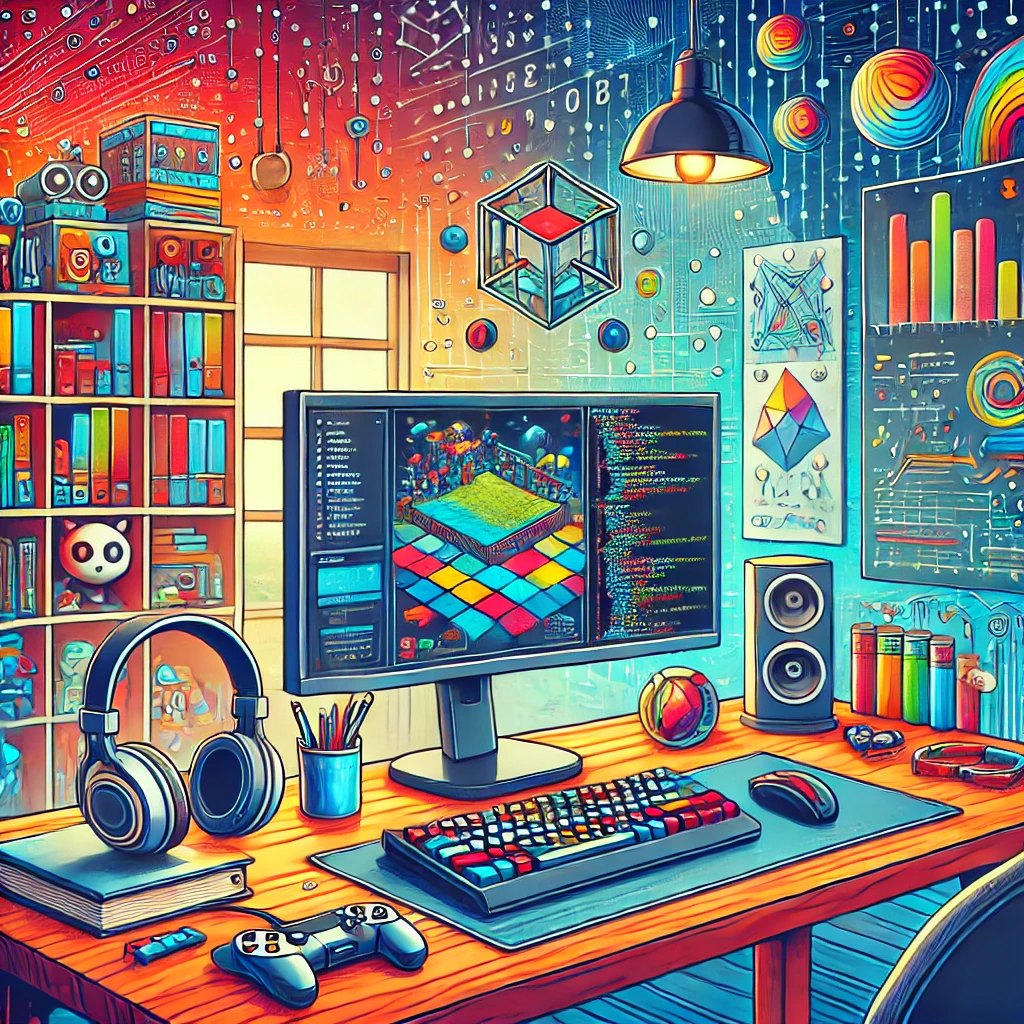Mods have revolutionized the gaming landscape, allowing players to extend their favorite games with new content, features, and creative ideas. Whether you’re interested in tweaking gameplay mechanics, designing custom skins, or adding entirely new levels, creating mods can be an incredibly rewarding experience. How to Create Custom Mods for Your Favorite Games.
This guide will walk you through the process of creating custom mods, covering essential tools, techniques, and tips for success.
What is Game Modding?
Game modding, short for “modification,” involves altering a game to introduce new features or change existing ones. Mods can range from small adjustments, such as new character outfits, to massive overhauls that transform a game’s genre.
Modding is not only a fun hobby but also an excellent way to learn game development skills, such as programming, 3D modeling, and sound design. Many professional game developers started their careers by creating mods.
Why Create Mods?
Here are some reasons why modding might appeal to you:
- Creative Expression: Bring your unique ideas to life.
- Enhanced Gameplay: Tailor your favorite games to your preferences.
- Skill Development: Gain experience in programming, design, and other disciplines.
- Community Engagement: Share your creations with a vibrant community of players.
- Career Opportunities: Modding can serve as a stepping stone into professional game development.
Getting Started with Modding
Before you dive in, it’s essential to prepare:
Step 1: Choose a Game
Pick a game with strong modding support. Popular choices include:
- Minecraft
- The Elder Scrolls V: Skyrim
- Grand Theft Auto V
- Stardew Valley
- DOOM
These games often have dedicated modding tools, extensive documentation, and active communities.
Step 2: Research the Game’s Modding Framework
Most games have specific guidelines for creating mods. Look for modding documentation or community forums for guidance. For example:
- Bethesda games use the Creation Kit.
- Unity-based games may use Unity Mod Manager.
- Unreal Engine games often provide official modding kits.
Step 3: Gather Tools
Depending on the game and type of mod, you’ll need specific tools. Common tools include:
- Game-Specific Editors: Tools like the Skyrim Creation Kit or Source SDK.
- 3D Modeling Software: Blender, Maya, or 3ds Max for creating assets.
- Image Editing Software: Photoshop or GIMP for textures.
- Code Editors: Visual Studio Code or Notepad++ for scripting.
- Audio Tools: Audacity for editing sound effects and music.
Step 4: Set Up Your Workspace
Organize your tools and create a dedicated folder structure for your modding projects. Ensure your system meets the technical requirements for the tools and games you’ll be working with.
Types of Mods
Here are some common types of mods and how you can create them:
1. Cosmetic Mods
These mods change the appearance of in-game assets, such as characters, items, or environments.
- Tools Needed: Image editing software, 3D modeling tools.
- Process: Extract game assets, edit textures or models, and replace the originals.
2. Gameplay Mods
Alter gameplay mechanics, such as adding new abilities, weapons, or AI behavior.
- Tools Needed: Code editor, scripting knowledge.
- Process: Modify game scripts or create new ones to implement desired changes.
3. Content Mods
Add new levels, quests, characters, or entire storylines.
- Tools Needed: Game-specific editors, 3D modeling tools, and scripting knowledge.
- Process: Use level editors and scripting tools to design and implement new content.
4. Overhaul Mods
Transform the game with comprehensive changes, such as turning a fantasy RPG into a sci-fi shooter.
- Tools Needed: All the above tools, plus extensive planning and collaboration.
- Process: Combine multiple modding techniques to overhaul gameplay, visuals, and story.
Step-by-Step Guide to Creating a Simple Mod
Let’s create a basic mod to replace a character’s skin in a game like Minecraft.
Step 1: Extract Game Files
- Locate the game’s installation folder.
- Use a tool like AssetStudio or WinRAR to extract the relevant files.
Step 2: Edit Textures
- Open the character texture file in an image editing tool.
- Make your changes (e.g., recolor the outfit or add patterns).
- Save the edited file in the correct format (e.g., PNG).
Step 3: Repackage Files
- Replace the original file with your edited version.
- Repackage the files using the game’s asset bundling tool.
Step 4: Test Your Mod
- Launch the game and load the modded content.
- Verify that your changes appear as expected.
Best Practices for Modding
1. Start Small
Begin with simple mods to build your confidence and skills before tackling complex projects.
2. Back Up Files
Always create backups of original game files to avoid permanent damage.
3. Follow Guidelines
Adhere to the game developer’s modding policies to avoid legal issues.
4. Test Frequently
Regularly test your mods to identify and fix issues early.
5. Join the Community
Engage with modding forums and communities to learn from others and share your work.
Sharing Your Mods
Once your mod is complete, share it with the gaming community:
- Upload to Modding Platforms: Popular sites like Nexus Mods, Steam Workshop, or Mod.io.
- Provide Documentation: Include clear instructions for installation and use.
- Promote Your Work: Share your mod on social media, forums, and YouTube.
Expanding Your Skills
As you gain experience, challenge yourself with more ambitious projects:
- Learn Programming: Dive deeper into languages like Python, C#, or C++.
- Explore 3D Modeling: Master tools like Blender to create custom assets.
- Collaborate: Work with other modders to create large-scale projects.
- Build Your Own Game: Use engines like Unity or Unreal to turn your modding skills into game development expertise.
Conclusion
Creating custom mods for your favorite games is a fulfilling and educational experience. It allows you to personalize your gaming adventures, learn valuable skills, and connect with like-minded enthusiasts. With patience, creativity, and the right tools, you can bring your ideas to life and contribute to the vibrant world of game modding. Start small, dream big, and have fun modding! How to Create Custom Mods for Your Favorite Games.
